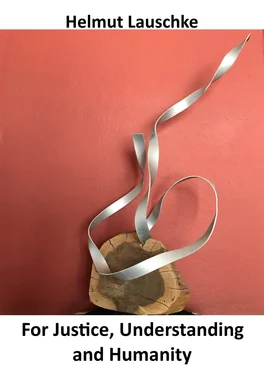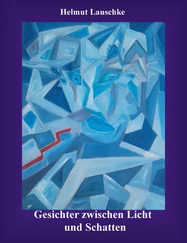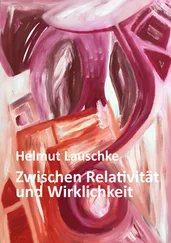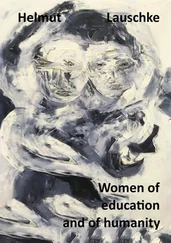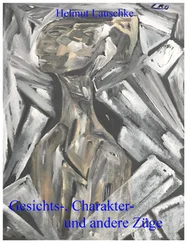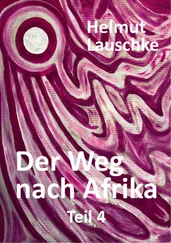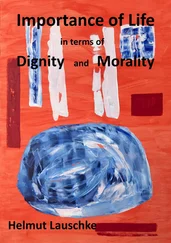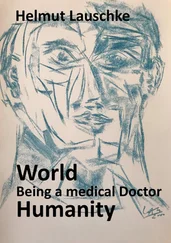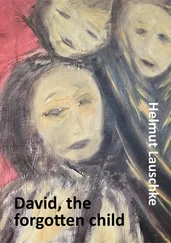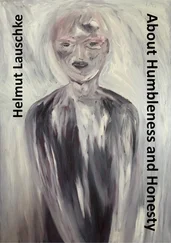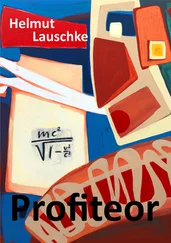Dr Lizette entered the tea room and called the forthcoming operation a ‘terrible’ one, because also she could hardly imagine the whole impact of the loss of one arm on the girl. The operation had not started and I was still in the tea room when I stood in front of the question, if a short but integer life with both arms would not be preferable against a long life with a mutilated body, since with both arms the girl could laugh what she would never do full-heartedly with only one arm.
Dr Tabani had entered the tea room and looked at my face of concern. He asked me for the reason that I gave him the question about life and life quality. The colleague said after a while of thinking with his soft voice that individual life in its quality is maybe comparable with other lives, but cannot be predictable and measurable. “Any kind of generalization will fail”, Tabani said who was able to share my concern in regard to the young girl and the forthcoming operation. “You have to follow the medical ethics, everything else is beyond your power and capacity”, he added and I made a ‘note’ in my brain.
Dr Lizette left the tea room to prepare the anaesthetic tools in theatre 2 while I showed Tabani the chest X-ray with the question, if he could see a lung metastasis. He screened carefully the radiograph and gave it back with the comment that he couldn’t see such a sign. I thanked for his comment and left the tea room with the sad feeling that the operation had to be done following the rules of the medical ethics. Tabani wished me strength for this operation. The girl was on the operating table and I washed hands and forearms longer than normal because of the heaviness of the thoughtful reflections.
It was an oppressive silence over and around the girl what remembered of the silence of grief in the moment of a child’s burial. The lakes of tears were in the eyes of the parents and other family members and friends who follow speechlessly in the deepest shock the small coffin and say goodbye stunned with a speechless grief and the sounds of sobbing, while the coffin gets lowered down to the ground for the child’s eternal rest. And all this without the opportunity for a last goodbye kiss from the mother and the father. After the service and leaving the grave with the resting child bedded down into the soil, people would start remembering and reiterating their experiences of joy what this child had brought into the family and the family’s life.
To cut off the girl’s arm
I incised the skin on the right upper arm close under the shoulder breadth in the shape of a fish mouth. I ligated and cut the big arm vessels, shortened the arm nerves up to the armpit and cut the muscles after separation from the attachments to the most upper part of the bone shaft which was finally cut a few centimetres below the humerus head. “God, have merci and give the girl a life with some joy. Forgive what I do to the girl!” With this silent prayer, I cut the right arm off and laid it on the paper spread out on the floor. I sutured the skin-muscle flaps over the short stump together and got tears in my eyes when I dressed the wound and put on the bandage on the short stump. The girl was on the trolley when she searched with the left hand for her right arm and could not find the arm. Dr Lizette and a nurse carried her on the trolley to the recovery room, while she was still searching for the right arm. The instrumenting nurse opened the laces and pulled off the coat from me. The green shirt was drenched with sweat when I wiped the tears from my eyes and the sweat from my face. I looked with sadness on the amputated arm on the paper on the floor and removed with the bone nibbler a piece from the tumour and put it in a small plastic container with formalin for the histological examination. A nurse wrapped up the cut-off arm with the paper and sealed it with some plaster straps.
I was depressed when I left the theatre and went to the dressing room where I wiped off the sweat from the head, neck and chest and put on a dry green shirt. I felt exhausted when I filled a cup of tea and took a seat in the small tea room. Dr Lizette sat opposite to him with a sad face. She did not say a word. This kind of an ‘ugly’ operation had taken away her speech. Tabani left the theatre room 3 after a hernia repair. He entered the tea room and went to the small hatch and recognized the depressed atmosphere. He filled a cup of tea and asked how the operation had gone. “Terrible!”, shot this word from Lizette’s mouth that Tabani did not ask about the details. It became quiet in the tea room and everybody had his or her own thoughts, until a nurse stood in the door between corridor and dressing room and called me to help in theatre 1 where Dr Ruth did a gynaecological operation.
I understood this call as a ‘vibration’ to get out of the depression and followed the nurse without finishing the tea. The problem in theatre 1 was a deep-situated colon cancer on the sigma loop. The bowel with the tumour were cut out and an end-to-end connection [ anastomosis ] between the descending and the rectal colon were sutured. Dr Ruth thanked for the spontaneous help and finished the operation by closing up the abdominal wall by suturing the various layers.
The Philippine colleague did an internal fixation on the medial tuber [ malleolus ] of an ankle joint in theatre 2. He was busy to insert the tension screw. The patient was a woman who had slipped over a rolling stone, while she carried a bucket with water on her head. I changed the clothes in the dressing room and went to the outpatient department to see after the waiting patients in consulting room 4. A mother put her six-year-old girl on the chair on whom a monstrous deformity was cut off from the right hand [ macrodactyly ] that was twice as big as her foot. The operation was done a couple of weeks ago and the mother brought the girl for the follow-up. The girl looked happy to be freed from this ugly monster and that her hand got for the first time a functional meaning as she could grasp and keep small objects like a pencil between the thumb and the small finger. She demonstrated her skills and scribbled some lines on a piece of paper. I felt the satisfaction that I could improve the aesthetics of the hand shape and gave this hand a function and the girl a better quality of life. The mother was happy. She told that she will send her daughter to school what was impossible with the hand monster that had to be carried by her left hand. Doctor, patient and mother had a smile of relief and gratitude on their faces and the date for the next follow-up were noted in the health passport.
A man of around fifty years of age took the seat on the chair and held the leg prosthesis with his right hand. The bone stump was prominent and had thinned and inflamed the soft tissue coat. A revision with shortening of the bone shaft was needed that I admitted the patient and put his name on the preliminary operating list. An old woman supported by another woman walked with difficulty to the chair. She stood by holding the right hand on the backrest and pulled up with her left hand the long-hanging dress over her left knee. The old woman kept her head bowed and indicated with her left index finger the swollen knee which she could not bend. I helped the old woman for a seat on the chair and cleaned the skin over the knee with the disinfectant solution and put a needle into her joint. An amber-coloured fluid of a big amount ran through the needle into the kidney bowl. I had removed the needle when the old woman felt the relief and flexed the knee. She was one of the many old people who came to the hospital with advanced alterations [ arthrosis ] of the knee joint for release of the effusion. An artificial joint could help a number of patients, but this was not affordable for the poor people in the north and also not feasible at Oshakati hospital. I explained to the old woman that only a stiffening of the knee could take away her pain, but she rejected this kind of help. She said that she needed her knees. I prescribed the anti-inflammatory drug in her health passport. The old woman left accompanied by the younger woman the consulting room for the dispensary in the waiting hall to receive the small yellow plastic bag with the pre-packed tabs for no longer than one month or only two weeks, if a drug shortage was in sight.
Читать дальше
